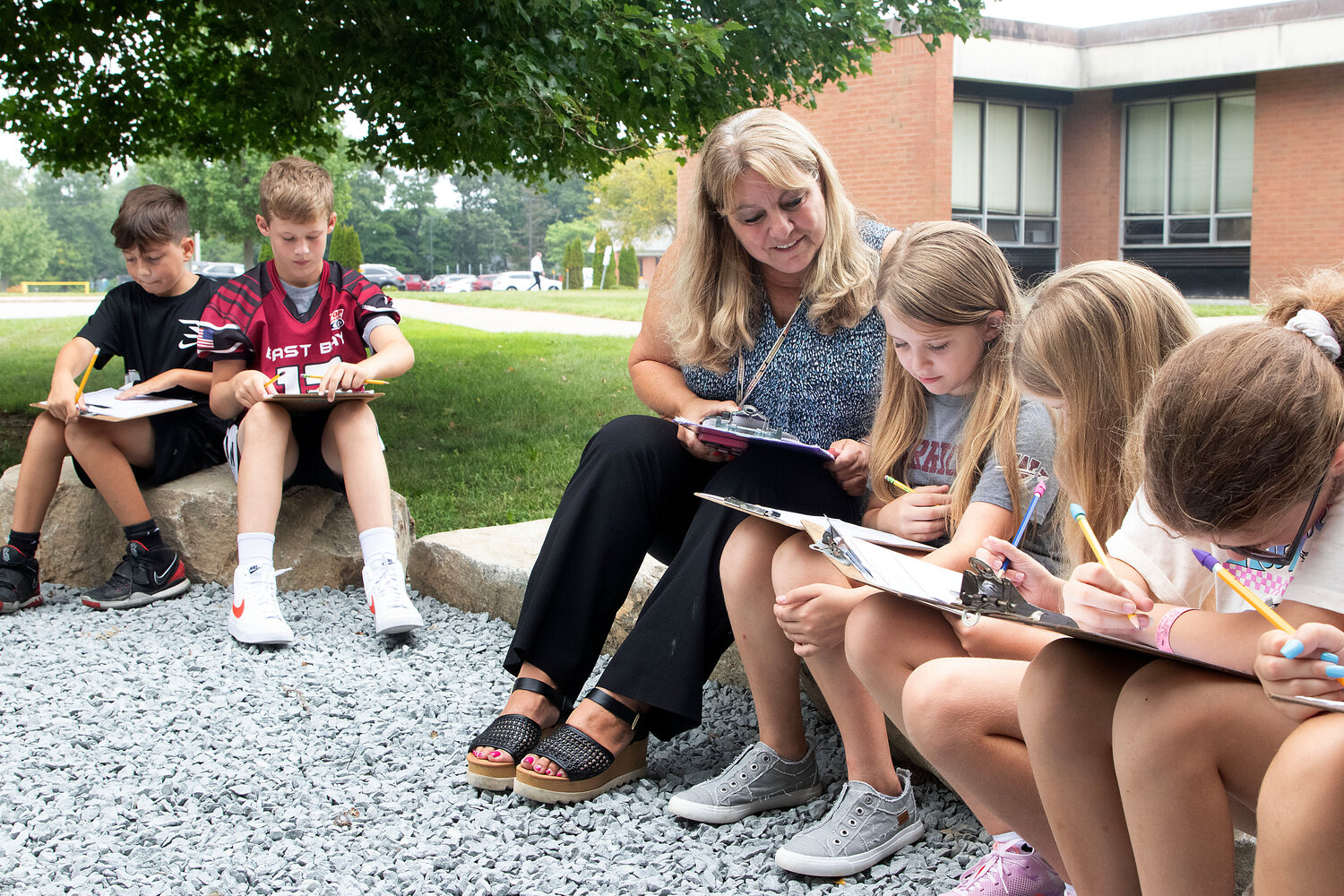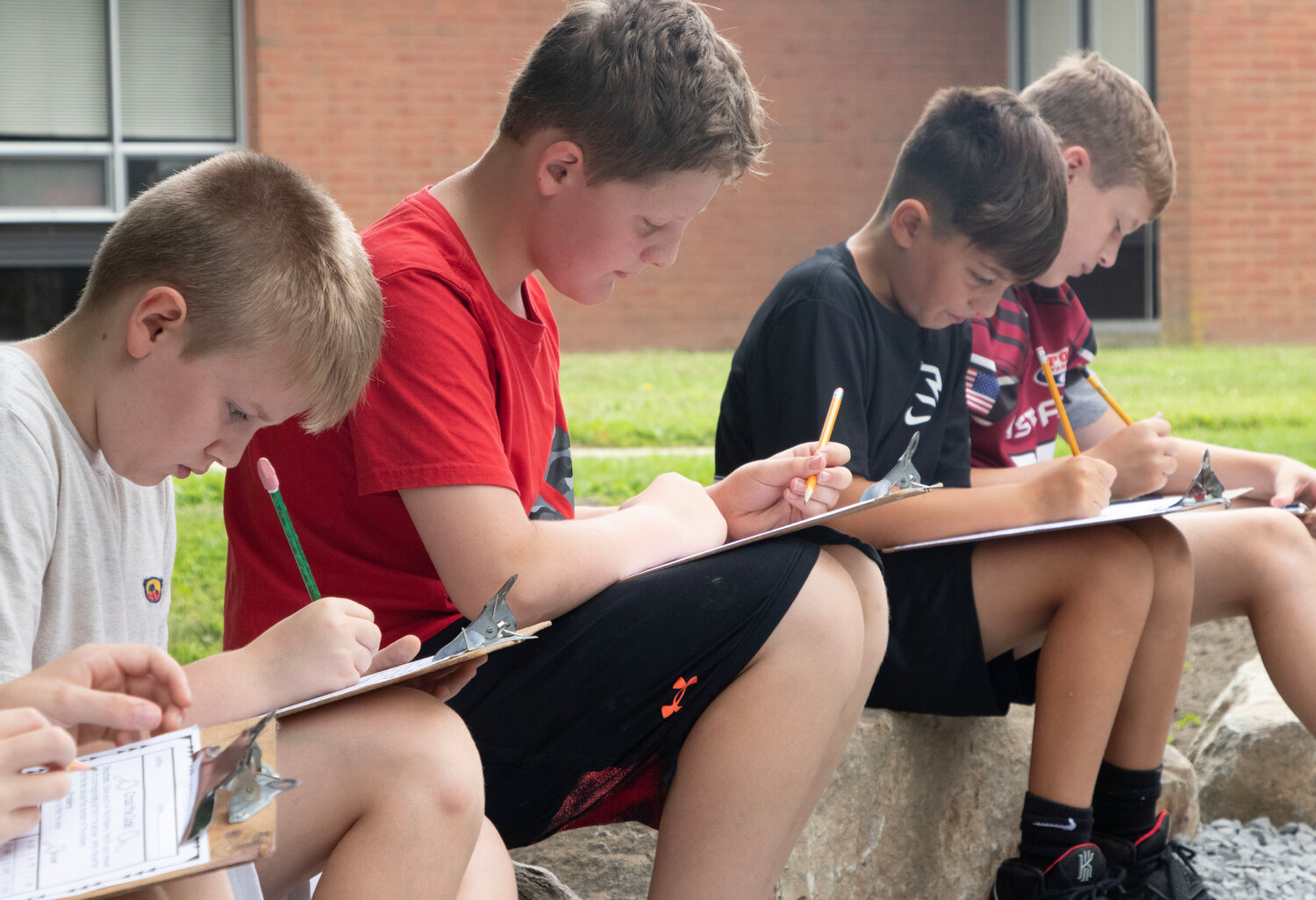'Grounded and focused' — new outdoor learning areas impress at Hugh Cole
Hugh Cole teacher Lynn Palmieri has been an outspoken advocate on the benefits of outdoor learning for years. Now she has two dedicated outdoor learning spaces to prove it.
This item is available in full to subscribers.
Please log in to continue |
Register to post eventsIf you'd like to post an event to our calendar, you can create a free account by clicking here. Note that free accounts do not have access to our subscriber-only content. |
Day pass subscribers
Are you a day pass subscriber who needs to log in? Click here to continue.
'Grounded and focused' — new outdoor learning areas impress at Hugh Cole
It was the first week of school, and a small group of Hugh Cole students were tasked with among the most dreaded of activities — math.
But if you were there to witness the action at one of Hugh Cole’s two new outdoor learning spaces — a pair of modest areas composed of large sitting boulders circled around a filled-in area of crushed stones, one on either side of the building — you would have guessed they were working on something infinitely more engaging.
“I will never go back to traditional teaching,” said Hugh Cole teacher Lynn Palmieri. “This has made such a huge difference in the way I teach, and in the way kids learn.”
Palmieri has been in these pages before as an outspoken advocate for the power of outdoor learning. She was among a cohort of Bristol Warren teachers chosen to participate in a professional development series operated by outdoor learning nonprofit group Thrive Outside last year, after her emphasis on promoting outdoor activities at Hugh Cole drew attention from the group and the district administration.
But she will be the first to tell you that she has seen the difference learning outside makes for kids for many years now. She strives to get outside with her students whenever the weather permits, throughout the school year. And it’s something that is catching on.
So much so, that Palmieri thought she would take the initiative to bring a dedicated outdoor learning space to Hugh Cole. Outside of her teaching role, Palmieri is a general contractor, and recently did a redesign of her back yard at home, complete with a rock-laden waterfall feature. She thought maybe a stripped down version of that could fit in nicely outside at Hugh Cole.
Utilizing her connections with ELJ Construction MJ Construction of Bristol, Palmieri got quotes for the project, a pledge for some donated materials from ELJ, and brought the proposal to Hugh Cole Principal Colin Grimsey, who had previously bought into Palmieri’s outdoor endeavors in a previous school year by gifting her a whiteboard on wheels that she could use for instruction outside.
Grimsey loved her new idea so much that he found room in the school’s budget to install two of the spaces instead of one. The project then moved quickly, getting everything built and ready just before the opening of schools in early September. Kids began using them right from the first day.
“He saw the difference in the kids, and he understands the importance of it. I’m so appreciative to have a principal like him who is moving the school in this direction,” Palmieri said. “I know there's been other teachers who have already said they're going to come outside and that they're excited about this area.”
Backed by preliminary data
During the visit to the outdoor classrooms, Palmieiri excitedly showed a file from last school year that tracked the progress of students in her class who were reaching academic standards. At the beginning of the year, 16% of students were on level. By the end of the year — 92% were in the green.
To Palmieri, and to Grimsey, it’s more evidence showcasing how important providing these types of outdoor opportunities were for students.
“Ms. Palmieri has done an amazing job with this program and the kids have responded incredibly well, and you can’t argue with the results. We like to support innovative ideas that generate results in students’ performance and support their emotional and social wellbeing,” he said. “Correlation does not equal causation, but when you get a lot of correlates, you start to be able to justify some causation. And not just from the data results that we saw either. I mean, just look at them.”
Grimsey is no stranger to the outdoor learning trend either. He was at Portsmouth High School when Thrive Outside built their flagship outdoor space at Melville Elementary School. He theorizes that as the momentum continues to pick up for outdoor learning, other schools will start doing the same.
“I’ve seen this catch on in other places as well. When I was in Portsmouth I saw it catch on there,” he said. “It’s something that philosophically I’ve always supported and now what we’re seeing is more and more peer-reviewed data coming out throughout the nation. It’s a movement, and it’s picking up momentum. Ms. Palmieri has been right on the crest of that wave.”
Grimsey said that Hugh Cole will also begin a whole redesign of their campus layout should the $200 million bond pass in November, but for now, the rock gardens provide a great case study on how outdoor learning has benefited kids at the school.
“All throughout last year, when I went outside what I saw was students who were calm, cool, collected, and focused in a way that you don’t necessarily see in the classroom all the time. And it translated back to the classroom as well,” he said. “It was a wonderful thing to see, kids who were that centered and focused and excited and joyfully learning.”
And backed by science, too?
While many of the benefits of outdoor learning might be readily apparent, such as getting more fresh air, not being cooped up inside and being able to move and actively collaborate with classmates, Bristol Warren school psychologist Laurie Hayden says that there are science-based factors at work here too.
“There’s a science called grounding that very few people know about,” she said. “The Earth has a wavelength of 7.83 vibrations per second, and when we make contact with the Earth — like by sitting on a rock — our own personal vibration gets closer to that, and we feel more calm. It actually makes our blood flow faster and more easily. It has many physiological benefits. It improves mood, and it puts the body in a better physiological state for learning.”
She shared an article from “Biomedical Journal” published on Dec. 15, 2022 from Stephen and Drew Sinatra, and Gaetan Chevalier. The study provides a detailed examination of how grounding could be used therapeutically to cover a range of ailments, from hypertension, elevated heart rates, and problems that arise from the elevated release of cortisol due to a number of external factors; and further, that those who cut themselves off from the healing vibrations of the earth have actually been clinically shown to be more vulnerable to such health issues.
“Electrons from earth serve as a potent neutralizer or quencher of electron-seeking free radicals,” they write. “The term electron deficiency may be appropriate to describe the largely ungrounded status of most of humanity. As noted, the modern lifestyle, notably the wearing of shoes with synthetic soles, has severed us from our electric roots, our connection with earth and its natural supply of electrons. Earthing may perhaps be a way to transfer electrons and fortify mitochondria, thus contributing to optimum levels of adenosine triphosphate (ATP) production in our cells.”











